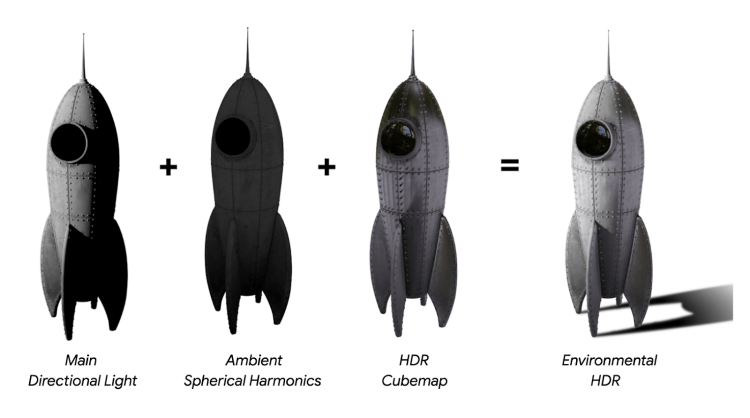testsetset
The first day of Google’s I/O developer conference was predictably overstuffed with announcements about midrange Pixel smartphones, Google’s new camera-touting smart display, and Google Assistant’s forthcoming car-booking capabilities. Yet another item on the agenda was ARCore, Google’s software development kit for AR app development on Android and ChromeOS.
ARCore has been used to create thousands of apps to date and now supports an estimated 400 million devices (up from about 250 million devices in December), Google says. And this week, it’ll gain improvements on the rendering, design, and interactivity fronts.
First up: The Augmented Images API, which lets users point their cameras at 2D images (like posters or packaging) and bring them to life, can now simultaneously track moving images and multiple images. “This unlocks the ability to create dynamic and interactive experiences, like animated playing cards where multiple images move at the same time,” wrote Google director of engineering Anuj Gosalia in a blog post.
The Light Estimation API, which provides a single ambient light intensity to mimic real-world lighting in digital scenes, has also been upgraded. A new mode — Environmental HDR — taps machine learning with a single camera frame to “understand high dynamic range illumination” in 360-degrees, taking in available light data and extending the light into a scene, with accurate shadows, highlights, reflections, and more. “When Environmental HDR is activated, digital objects are lit just like physical objects, so the two blend seamlessly, even when light sources are moving,” said Gosalia.
June 5th: The AI Audit in NYC
Join us next week in NYC to engage with top executive leaders, delving into strategies for auditing AI models to ensure fairness, optimal performance, and ethical compliance across diverse organizations. Secure your attendance for this exclusive invite-only event.

Above: Before and after Environmental HDR is applied to the digital mannequin on the left.
Environmental HDR is available with three APIs:
- Main Directional Light: helps with placing shadows in the right direction
- Ambient Spherical Harmonics: helps model ambient illumination from all directions
- HDR Cubemap: provides specular highlights and reflections
Last, but not least, Google today debuted Scene Viewer, an AR experience that can be launched from the web instead of an app. It’s the framework that powers Google Search on mobile’s AR viewer.
Google says Scene Viewer and the other enhancements will roll out over the next two ARCore releases.


